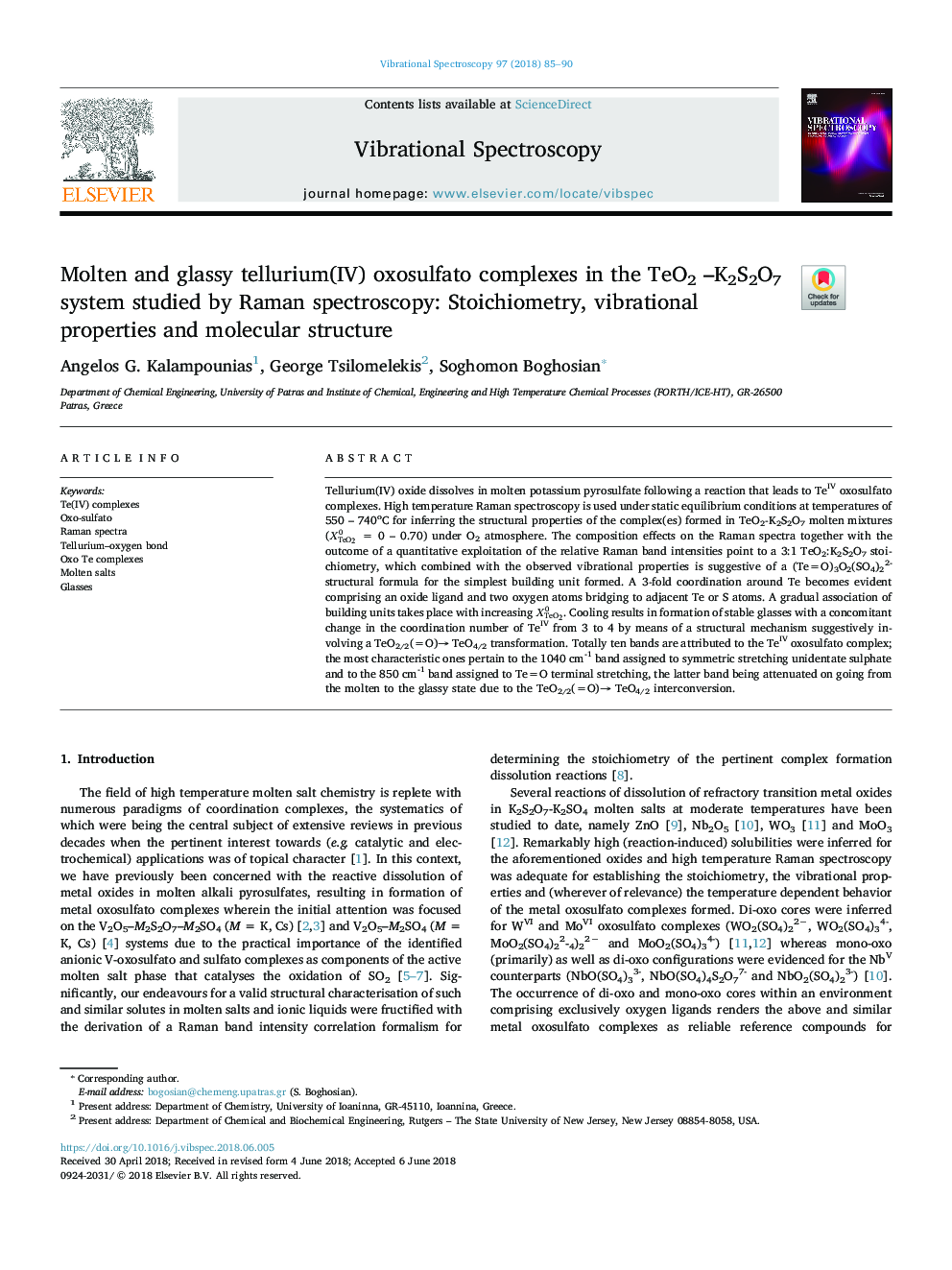| Article ID | Journal | Published Year | Pages | File Type |
|---|---|---|---|---|
| 7690687 | Vibrational Spectroscopy | 2018 | 6 Pages |
Abstract
Tellurium(IV) oxide dissolves in molten potassium pyrosulfate following a reaction that leads to TeIV oxosulfato complexes. High temperature Raman spectroscopy is used under static equilibrium conditions at temperatures of 550 - 740oC for inferring the structural properties of the complex(es) formed in TeO2-K2S2O7 molten mixtures (XTeO20 = 0 - 0.70) under O2 atmosphere. The composition effects on the Raman spectra together with the outcome of a quantitative exploitation of the relative Raman band intensities point to a 3:1 TeO2:K2S2O7 stoichiometry, which combined with the observed vibrational properties is suggestive of a (Te=O)3O2(SO4)22- structural formula for the simplest building unit formed. A 3-fold coordination around Te becomes evident comprising an oxide ligand and two oxygen atoms bridging to adjacent Te or S atoms. A gradual association of building units takes place with increasing XTeO20. Cooling results in formation of stable glasses with a concomitant change in the coordination number of TeIV from 3 to 4 by means of a structural mechanism suggestively involving a TeO2/2(=O)â TeO4/2 transformation. Totally ten bands are attributed to the TeIV oxosulfato complex; the most characteristic ones pertain to the 1040 cm-1 band assigned to symmetric stretching unidentate sulphate and to the 850 cm-1 band assigned to Te=O terminal stretching, the latter band being attenuated on going from the molten to the glassy state due to the TeO2/2(=O)â TeO4/2 interconversion.
Keywords
Related Topics
Physical Sciences and Engineering
Chemistry
Analytical Chemistry
Authors
Angelos G. Kalampounias, George Tsilomelekis, Soghomon Boghosian,
